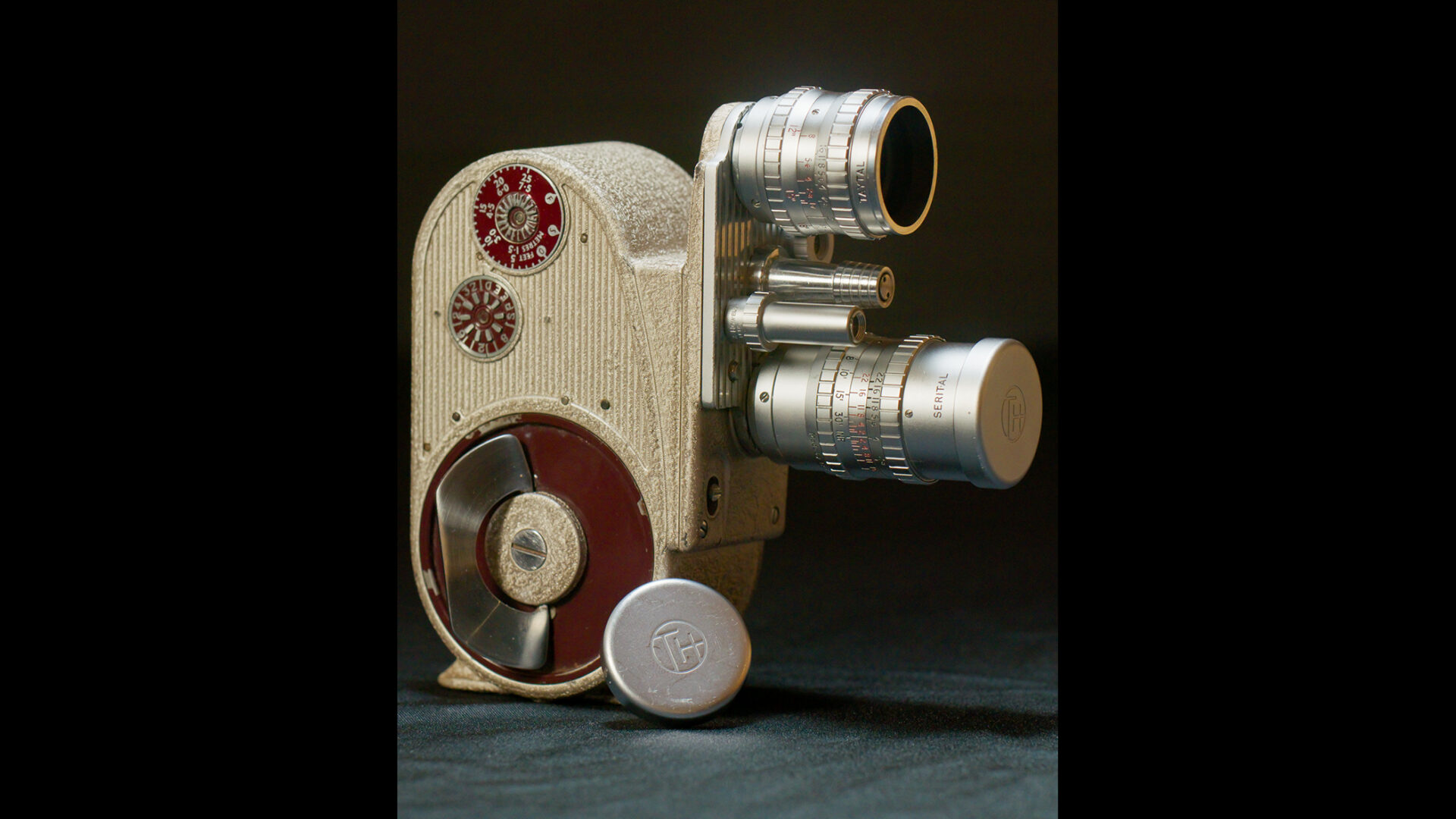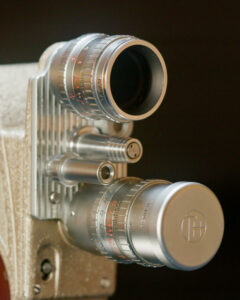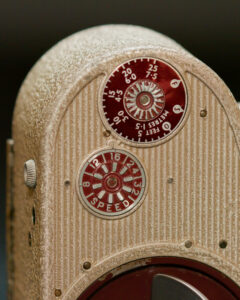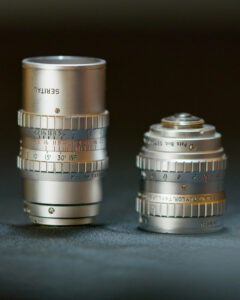Search for lenses, articles and help

Classic Cookes – Taking a look back at our extensive lens catalogue, their place in history and impact on the industry.
GB Bell & Howell Double Run Eight Wind up Camera (Model 605) with Dual Turret carrying Taylor, Taylor & Hobson Lenses – TAYTAL (0.5 inch f/1.7) and SERITAL (1.5 inch f/1.9), 1936 onwards.
In this camera and lens combination we see a partnership between multiple pioneers and celebrate a historical film format that encouraged widespread adoption of home movie capture.
Bell & Howell was founded in the United States in 1907. With routes going back to almost the beginnings of movie history their innovations were critical to the development of cinema including steadied projectors and standardising the sprocket holes in 35mm film. 1923 saw the introduction of their Filmo series that were popular for newsreel gathering and home movies.

The ‘Standard 8mm’ film format was first released by Kodak (initially under the name Cine Kodak Eight) in 1932 as an amateur gauge format that was cheaper and more portable than the 16mm format introduced a decade earlier. It would be popular for home movies until about 1965 when the Super 8 format was introduced. The format is also known, perhaps confusingly as Regular 8 or Double 8 but crucially uses the same size film as Standard 16mm. This stock already has perforations on each side of the film strip but is then reperforated to have twice the usual number of perforations along both edges – 80 total per foot of film.
A roll of film runs through the camera and exposes on only half the film width – this partially exposed spool is then reversed and run through the camera once more to expose the other half of the negative, leading to the Double 8 name. So, for what was one frame of Standard 16mm you are now getting four 8mm frames. At the laboratory the film was first processed and then cut down the centre and spliced together to give one roll of 8mm wide film with perforations on one side only.
Whilst people might be familiar with the easy-to-use cartridges Super 8mm would later be distributed in, Standard 8mm came on 16mm daylight loading spools. The camera could be loaded and later “flipped” in subdued daylight instead of complete darkness although the latter might be preferable by some users to extend the useable runtime of the film stock somewhat. The standard spool size for amateur use contained at least 25ft of film (usually a little more for loading and reversing) giving a total of 50ft available for projecting. At the usual filming speed of 16 frames per second this gave you about four minutes of footage.

Kodak’s 10ASA Kodachrome colour reversal stock was closely associated with this format and had distinctive colour rendition and fine grain. In the early 1960s Kodachrome II rated at 25ASA was introduced and Kodak produced Standard 8mm film up until 1992. Kodachrome’s excellent archival qualities means that old 8mm film can still appear remarkably fresh if stored in the correct conditions. The Standard 8mm format is in part to thank for footage still being captured during financially challenging periods such as The Great Depression. Agfa’s Agfachrome was also a popular choice, and independent suppliers made additional film stocks available by resprocketing and respolling films such as Kodak Black and White TriX (200ASA).
This particular model (Serial B2101) has a spring-loaded dual turret and wind up mechanism. There was also a single lens version and a triple turret model which was known as the ‘Tri-Lens Viceroy’. A passthrough viewfinder gives fairly accurate framing guidance and as the turret rotates to the longer lens so to does the viewfinder taking lens – so technically this camera comes with four lenses!
The frames per second is variable from 8-32fps and controlled via a dial on the side of the camera and above this dial is a footage counter. The loading chamber opens easily, and the film pressure plate pushes up against the loaded stock as you shut the lid making it easy to load and reverse the orientation. A mechanical shutter and dual action trigger switch on the front allows for single frame shooting for animation or continuous running.

As for the duo of Taylor, Taylor & Hobson lenses that adorn the front of this pocket camera they are a TAYTAL 0.5 inch (12.7mm) f/1.7 Serial 541417 with a close focus of 12” and 8 iris blades and a SERITAL 1.5 inch (38.1mm) f/1.9 Serial 552678 with a close focus of 24” and 12 iris blades. Both these lenses are threaded using the D-Mount standard, a narrower version of the still common C-Mount. This charming and still in pristine condition camera is on display at our London showroom and was photographed on the Cooke S8/i FF 75 and 135mm lenses.